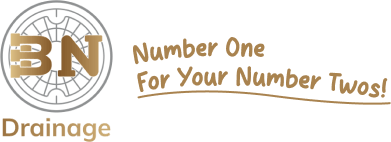Grease traps, also known as grease interceptors, they are designed to intercept and trap grease, fats and oil before they enter the water system. They come in various types, such as gravity grease traps, hydro-mechanical grease traps and automatic grease recovery units (AGRUs).
Before we start with the cleaning and maintenance process, let us understand the various types of grease traps. Here are some of them:
1. Gravity Grease Traps
These traps use gravity to separate grease from wastewater. They consist of a large tank where grease laden water enters, thereafter allowing the grease to rise to the surface; meanwhile, the water flows out through a pipe.
2. Hydro Mechanical Grease Traps
These traps utilise mechanical means, such as baffles or screens, to trap grease and solids. They are more efficient than gravity traps and are suitable for high-flow environments.
3. Automatic Grease Recovery Units
AGRUs systems automatically separate grease from wastewater and store it in a separate container for disposal or recycling. This system is ideal for kitchens with high grease production.
Are you looking for grease trap cleaners near you? Your search ends with us.
We are BN Drainage; we are experts when it comes to emptying and maintaining grease traps, so you can rely on them to clean your equipment effectively. We understand that grease traps and dosing units need to be cleaned thoroughly, preventing any excess fat from entering the public drainage system.
Call 0800 999 1769 or 0203 337 0349 , and we will look after the grease trap or dosing unit at your commercial food premises.
5 Ways to Clean Your Grease Traps
Cleaning your grease traps is essential for maintaining functionality preventing clogs and odours in commercial kitchens. Here are the top five ways to clean your grease traps:
1. Manual Scooping and Scrubbing
In this method, you physically remove solidified grease and debris from the trap using tools such as a scoop, shovel and spatula. Before you start with the scrubbing process, ensure that the trap is disconnected from the plumbing system and drain the remaining water.
Once the trap is empty, thoroughly clean it with a scoop or shovel to remove the solidified grease and debris. In the end, rinse it thoroughly with hot water and reconnect the trap with the system.
2. Hot Water Flushing
Flushing the grease trap with hot water will liquefy and flush out trapped grease and oils. If you have visible debris, then fill it up with hot water of temperature around 140°F or 60°C or higher. Allow water to circulate and melt debris for 15 to 30 minutes.
Drain the water and look for the remaining residue in the trap. Repeat the process until it is fully clean, and debris is visible.
3. Enzyme-Based Cleaners
Enzyme-based cleaners are specifically formulated to break down matters such as grease, fats, etc. For cleaning using these enzyme-based cleaners, pour the recommended amount of cleaners into the grease trap and allow it to sit for a specific time and break down the grease build up.
After the designated period, flush the trap with hot water to remove dissolved grease and debris, leaving the trap clean and odour-free.
4. High-Pressure Water Jetting
This method is effective for deep cleaning and removing the suborn grease build up. In this method, a high-pressure water jet is attached with a special nozzle to hose away the grease and debris from the interior surface of the trap.
This method can clean the places where hands or mild cleaning agents cannot reach. You may use pressure ranging from 1,500 to 3,000 pounds per square inch.
5. Professional Cleaning Services
Hiring professionals for cleaning is the most effective way. It is hassle-free, and they have equipment and necessary chemicals that complying with regulations.
Hire professionals now by calling on 0800 999 1769 or 0203 337 0349 or email us at info@bndrainageltd.com. We will clean your grease trap thoroughly and our experts will use appropriate methods and ensure it is properly reassembled after cleaning.
5 Maintenance Tips for Grease Traps
You should regularly clean and maintain your grease traps for optimal performance and longevity. Here are some of the maintenance tips:
1. Regular Cleaning
You should regularly clean your grease trap. Perform manual scooping and scrubbing or use other cleaning methods mentioned above to remove solidified grease, debris and build-up. You should ensure that thorough cleaning of all components is done regularly to avoid clogging and build-up.
2. Waste Disposal
While disposing, you should be very careful. Ensure that grease and solid waste are disposed of in their designated containers and that they comply with local regulations. The disposal process should be environmentally friendly and shouldn’t cause any contamination.
3. Monitoring Grease Levels
You should regularly monitor your grease levels in the trap and schedule your clearance accordingly. The level should be maintained to keep optimal performance and prevent overflow. If necessary, install grease level monitoring devices and alarms for timely reminders.
4. Educate Staff
In the case of the commercial kitchen, inform your staff about the proper procedure of disposal. Encourage them to scrape off the excess from the plate before washing so that there is less grease and debris build-up. This will help in saving the cost of expensive repairs and be compliant with rules and the environment.
Conclusion
These methods can help you in maintaining and cleaning your grease traps. This will ensure that your operations are smooth for your commercial kitchen. Remember to follow safety protocols and wear appropriate protective gear. Regular maintenance will prolong the lifespan of your grease traps.
Call us today and we will clean your grease traps. Call us on 0800 999 1769 or 0203 337 0349 or email us at info@bndrainageltd.com. BN Drainage provides a wide variety of services, such as drainage services, commercial services, emergency drainage services and gutter clearance.
Connect with us today!

